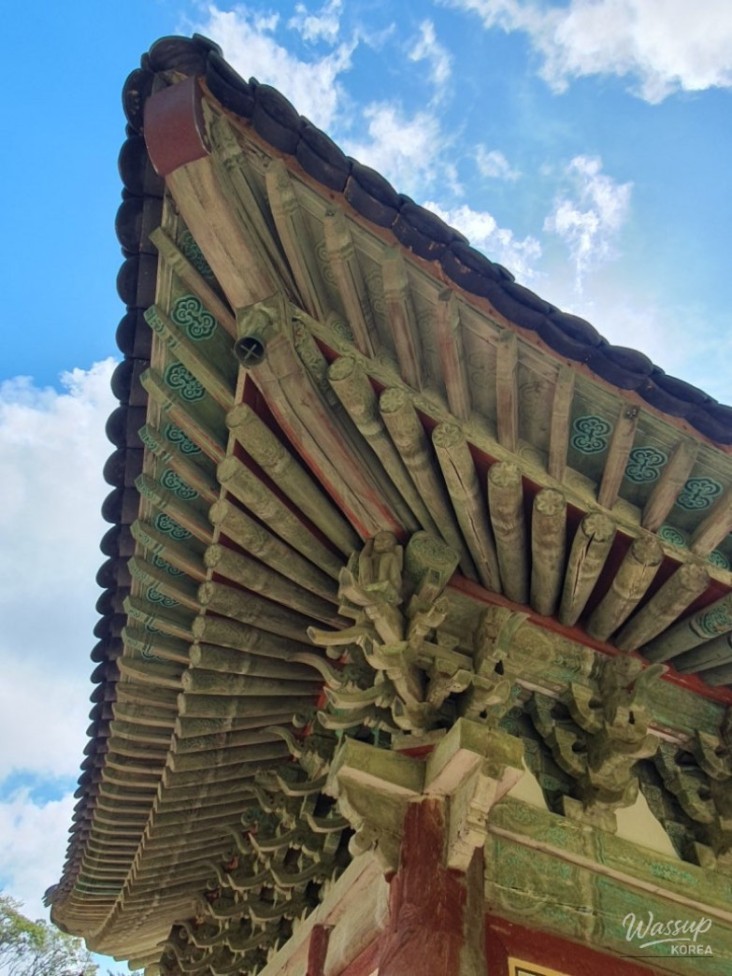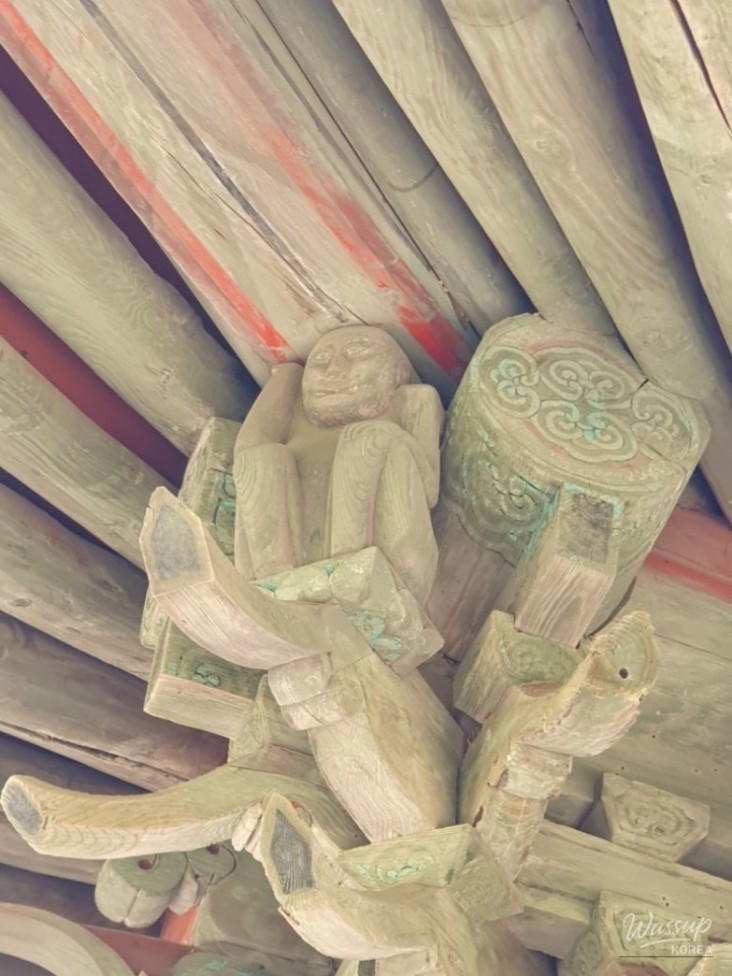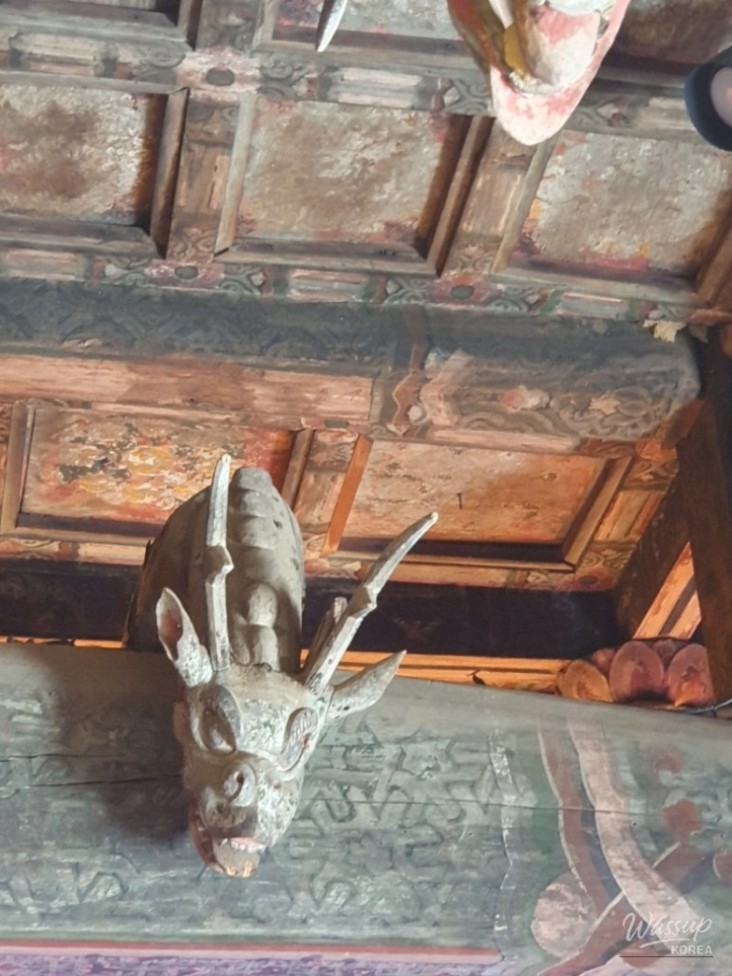A Day Trip to Ganghwa Island: Temples, History, and a Change of Plans

The heat makes me hesitant to go out, but staying home all weekend is a recipe for depression, so I make it a point to venture out every weekend. The motto of my Naver blog, 'Anything becomes something if you record it,' has been fading, but after starting Park Ji-won's <The Jehol Diary> last week, I decided to give writing a casual try again.
I discovered that Ganghwa Island is accessible even without a car. Apparently, while I was away, a subway line called 'Gimpo Goldline' was built. This small, four-car train departs from Gimpo Airport. It doesn't have doors between the cars or a separate conductor's compartment, creating an open feel. But since it runs underground, all you see outside is darkness. I wonder if all this underground construction will cause sinkholes here and there.
I got off at Gurae Station and took bus number 70 towards Jeondeungsa Temple. The scenery was refreshing. I told my husband, "It looks like Eastern Europe." He replied, "More like Georgia."
Ganghwa is indeed an island. Although it's now connected by bridges, so it's not really an island anymore, seeing the fishing boats from the bus window gave me a genuine travel feeling.
I had *sanchae bibimbap* (mountain vegetable bibimbap) at a restaurant near the entrance of Jeondeungsa Temple. The side dishes were too sweet, and the owner spoke German.
Jeondeungsa Temple dates back to the Goryeo Dynasty and has many old trees.
The 'Daejoru' gate, in the picture below, that leads into the grounds of Jeondeungsa Temple, has a verse from Yi Saek's poem 'Jeondeungsa' inscribed on it.

It was crowded. A passerby said in an irritated voice, "It's like a tourist spot here." I wonder if they thought it was a quiet, religious place only for prayer.
The figures supporting the eaves of the main hall, Daeungjeon. They say they were placed there to listen to the sutras three times a day, but they seem more interested in the scenery outside.
Dragon. So cute! Someone should make this into a souvenir!
Jeondeungsa Temple is surrounded by Jeongjoksanseong Fortress. You can hike along the fortress wall by going around the side or back of the temple. We didn't encounter anyone else while walking along the fortress. We had the view all to ourselves.
The fortress is built of stone. In <The Jehol Diary>, Park Ji-won criticized the laborious process of building fortresses with stone in Korea. He argued that it takes a lot of effort and time to shape the stones and fill the gaps to prevent collapse. In contrast, he said that in Qing China, they baked bricks to standard sizes in kilns, making construction easier and faster. It was only long after Park Ji-won returned from Jehol and suggested using bricks that the idea was adopted, and bricks were used to build Hwaseong Fortress.
There's a tea house inside Jeondeungsa Temple. It was crowded, and the drinks and snacks were priced higher than cafes in Seoul, but the view made it worth it. It would be best to visit on a quiet weekday to fully enjoy the ambiance.
Feeling like going straight home was a bit of a waste, I went to Ganghwa Terminal.
I looked around Yongheunggung Palace, where King Cheoljong lived (and where an electricity bill was lying around!), the Goryeo Palace Site with its well-maintained lawn (requiring a 1,400 won entrance fee), a literature museum to escape the heat for a while, and a pretty Anglican Church built in a half 2-story *hanok* (traditional Korean house) style. Then, still battling the intense sunlight, I walked to the terminal and stopped by Lotteria. When did Lotteria burgers get so good?
I have a long-term plan to live in a small provincial city, but I've decided to exclude Ganghwa Island.








No comments yet.






